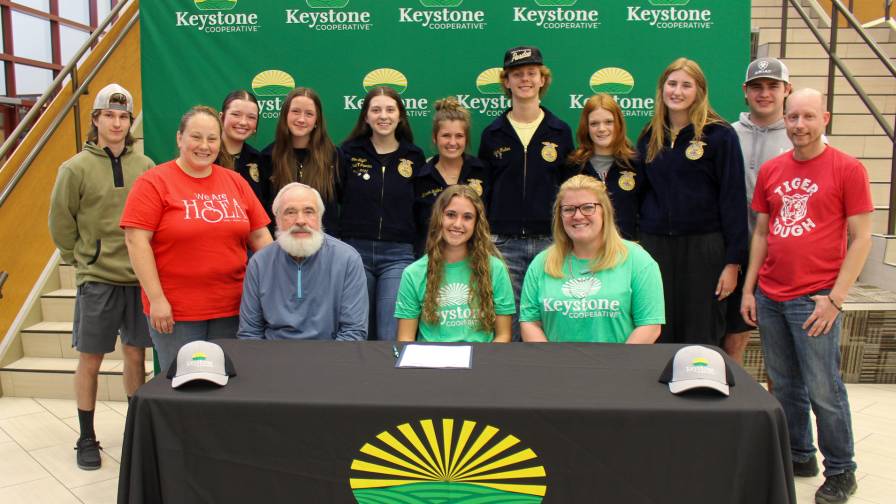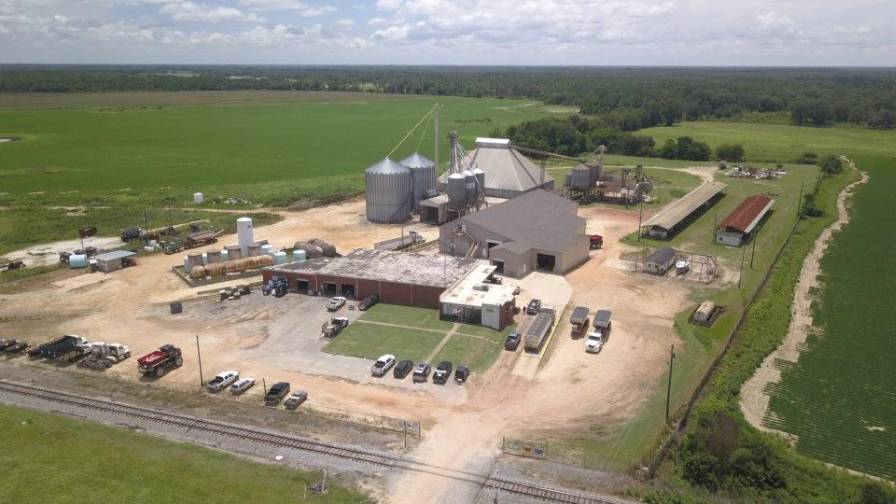Time For Scouting

Once Is Not Enough
Scouting can be one of the first actions a grower takes to prepare his crop for the season. “Usually, [we start] early April,” says Todd Kautzman of Mott Grain & Agronomy, Mott, ND. “We start scouting for weeds such as cheat and bromegrass.” This is a great way to find out what your crop is going to have to compete with during the season. Growers who want to get their plants in the ground as soon as possible can put off field scouting for a bit; Bruce Palmer, research agronomist, The McGregor Co., Colfax, WA, says the company typically starts scouting “once the crop has emerged from the seed bed.” This gives them the ability to scout not just for weeds, drainage problems, and insects, but also for nutrient deficiencies and diseases. Jim Shelton, a Landmark Services Cooperative agronomist in Juda, WI, said the company starts in late April, “with early scouting for no-till burn down herbicide selections.” Shelton added that Landmark’s scouts typically make two to four visits per year.
Indeed, most scouting isn’t a one-shot deal; Kautzman usually visits his growers two to five times per season. “In-season crop scouting is in late May and early June,” he says. Several visits to a customer’s field are necessary throughout the season to keep an eye on problems, look for new problems, react to weather complications or pest attacks, and make sure that the crop protection program is working.
The amount of visits made by McGregor “depends on the crop being raised, and the customer’s wants and needs,” Palmer explains. “Winter wheat has the longest growing season and will require more visits — one in the fall and up to seven or more in the spring. Some varieties require more visits due to a genetic disease package; other crops usually require a few less visits.”
Program Design
Because scouting is important for both the business of the retailer, who will provide the agricultural products necessary to protect the customer’s crop, and the grower, who wants the best production he can get from his field, it should be a combined effort. The field management program should be designed with the customer so that both parties have the same goal, know what the other wants, and agree on the best course of action.
This doesn’t mean that the grower must come along during the scouting; usually, the grower has other important chores on which to focus. “If the customer has time, I encourage them to come along,” says Kautzman, “but most of my scouting is done because the grower does not have time to scout himself. I carry a worksheet with me while I am scouting, recording the weeds I see, and then give them my recommendation. And he gets a copy of my scout sheet.”
For the ag retailer, knowing which crop will be grown in the field is important so he knows what specific problems to look for. Otherwise, once a crop plan has been put together for each field by the retailer and grower, the scout can visit the field alone. Palmer says that “unless requested by a grower or there is a concern that the grower needs to see first hand,” the grower does not need to go along. “The grower is kept abreast of any problems that have been discovered, either by written report, e-mail, or phone conversation,” Palmer explains.
Shelton agrees — growers serviced by Landmark scouts only accompany them on the visit “perhaps one-third of the time — or if there is something they need to see for themselves.”
Customer Response
“Customers love the scouting,” says Kautzman. “It’s just that they are not willing to pay a lot for this service.” Kautzman solves this problem by providing the service free of charge for customers he deems “patrons” — someone who is doing at least 60% of his total farm business with Mott Grain & Agronomy. “I only scout fields for my patrons. If not, I do not scout at all.” Kautzman doesn’t lose the business of his non-patrons, though: “The farmers in our area do a lot of field scouting; the majority of them do their own, and they come in and tell me what they have found and I give them a recommendation.”
The repeat business is important, and customers grow to trust their retailer. “For those who we frequently scout for, I get to know their fields very well and help them decide what crops to rotate to the next year,” Kautzman says. Personalized service is also vital to building growers’ trust and appreciation for scouting, rather than a “one-size-fits-all” approach. “We try to do what the customer is asking for,” says Palmer. Some growers may just want a basic look-over of their fields, along with recommendations on how to solve existing problems. Others are looking for preventative measures, and still others want in-depth solutions that only a field scout can provide. “We have a private soil testing company do our soil testing,” says Kautzman, describing a service that can greatly improve a grower’s knowledge of fertilizer, irrigation, and drainage requirements and help the retailer provide solutions to these impediments.
Landmark also offers various levels of scouting: “We can make it a simple one-shot deal, or more comprehensive including plant tissue testing and aerial NDVI photography,” explains Shelton. “Growers always appreciate you scouting their fields. They appreciate and expect the same level of performance each and every year.” This favorable reaction to scouting programs always comes, says Shelton, “right up to the time you wish to charge for them.” This has been somewhat of a hurdle for Landmark; they’ve “never had a problem convincing growers of the importance” of scouting, Shelton says. “The problem is getting them to pay for it when they expect it as a comp service, as they are buying from us.” Landmark has provided scouting as a comp service for decades, he explains, so growers thoughts are: “Why should they pay for it today?”
‘Tis The Season
Whether a retailer provides the service for free to his best customers or charges for a comprehensive scouting program, a good scout is a great asset to any grower’s operation. While it’s still early in the year, and crops haven’t even gone into the ground yet in many parts of the country, retailers are already forecasting problems that they might expect their customers to run into this year. “As wet as it is at this time, I am sure we are going to see an increase in tan spot, rust, and other leaf diseases,” says Kautzman.
As for Palmer, he’s not yet sure what to expect from the coming season. “But we will be the first to find out when the time comes,” he says.





